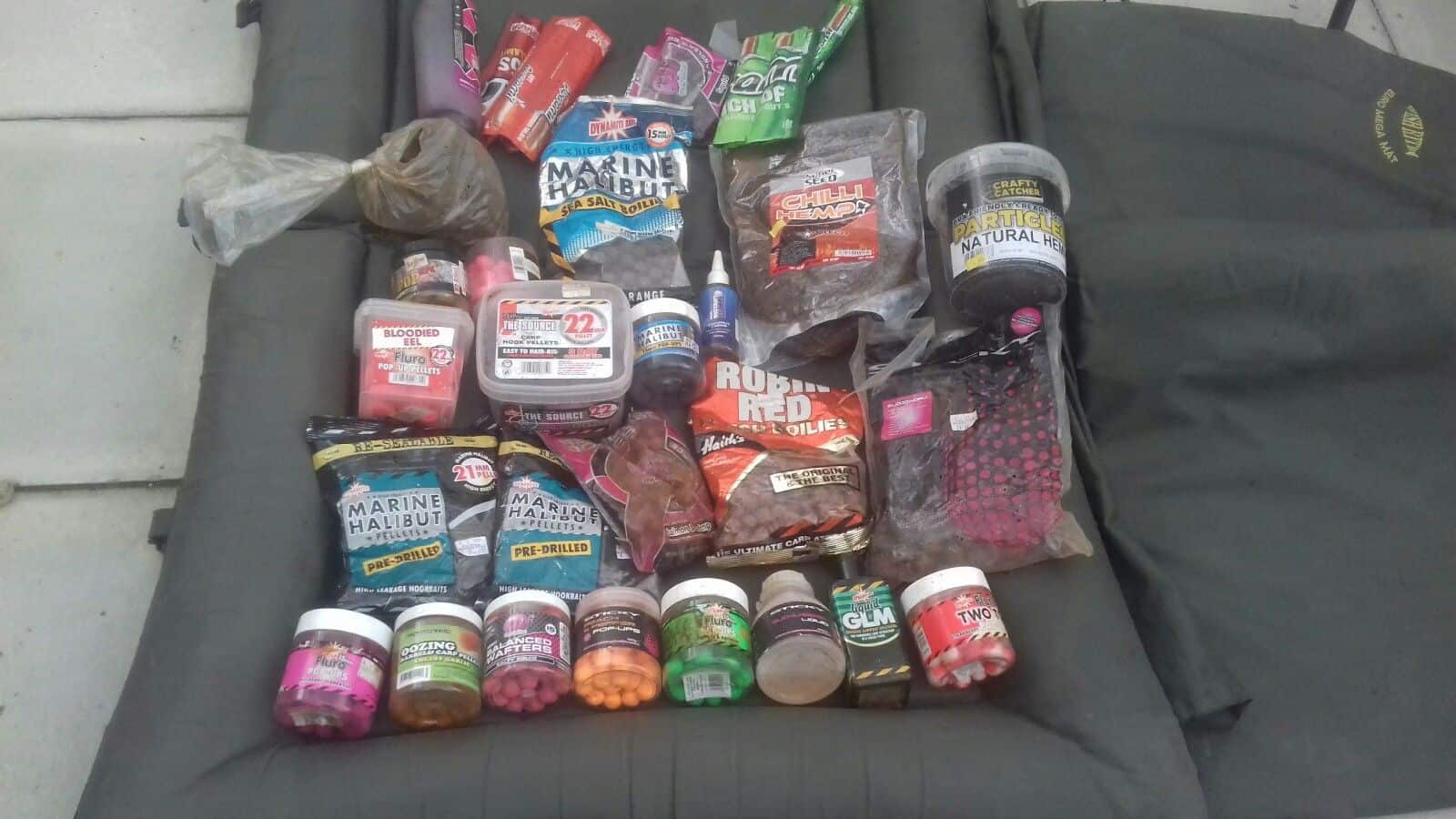The Feeding Habits of Carp
Many experienced carp anglers have seen a fish test the hookbait by taking it into its mouth and then blowing it back out. This type of fish has a memory of what’s good and what’s not edible. It can determine if the food is good or bad by looking at the nutritional content or taste.
What Do Carp Like to Eat?
The rapid growth of carp can be attributed to the warm water and the abundance of food in the area. The species can consume up to 40% of their body weight in just a day. In Britain, the cold waters can prevent the fish from growing fast enough.
Like other creatures, carp require daily nutrients such as proteins, vitamins, minerals, amino acids, fibre, carbohydrates, and oil. They can also smell the amino acids produced by various aquatic plants and bloodworms. Some of the food that the fish eat include seaweed, green-lipped mussel extract, molasses, and liver powder. However, human food such as peanuts, which are commonly used by some anglers, do not mimic the natural food that the fish eat.
The fish like various types of food, such as bread crust, boilies, meat baits, maize, and fruity flavors. They also prefer items that contain ingredients that are similar to the natural food they eat, such as white fishmeal, rennet casein, and seaweed extract.
In addition to boilies, imitation baits are also commonly used by anglers to attract fish. Sometimes, artificial corn is visually effective when the boilie fails to attract the fish.
How do Carp Digest their Food?
The top portion of the mouth is used to trap food particles against the bottom of the mouth. Non-food items are then expelled through the gills. Almost all of the food that the fish consumes is thrown away. The pharyngeal teeth are located at the back of the mouth. These are aligned with three rows. Each of these teeth has an outer and an inner row.
The digestive system of a fish is very important to understand. The buccal cavity, which is located inside the fish’s mouth, is lined with a membrane that has tough ridges. This area is filled with mucus goblet cells and taste buds.
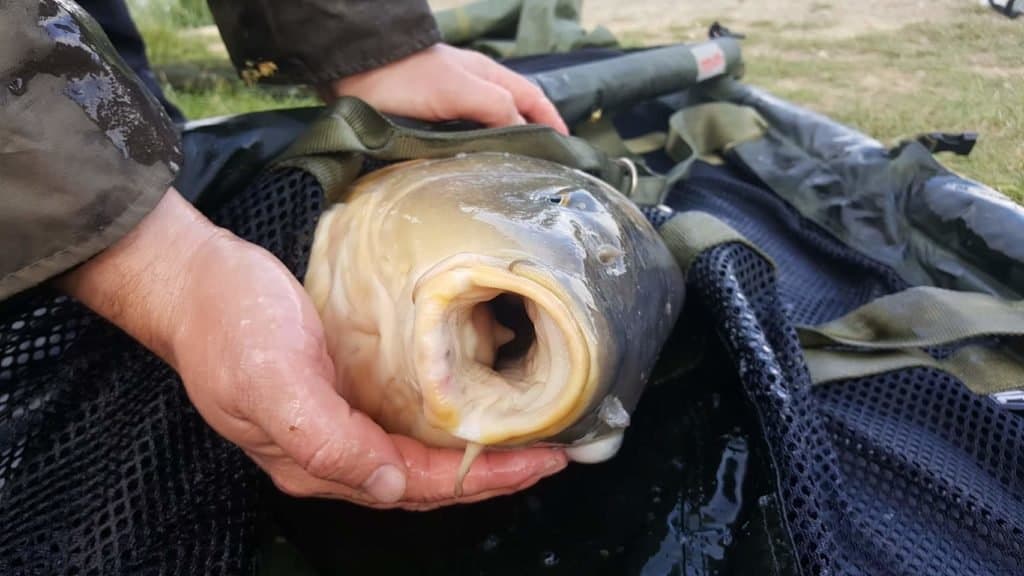
The teeth are positioned below a hard, calcified pad. The food particles are ground between the pharyngeal teeth and the teeth. The food is then transported to the receptive sack and intestine through the duct known as the esophagus. This is lined with a bed of goblet and cilia cells to allow the food to pass through.
A little-known fact is that the carp does not have a stomach. Instead, it digests through its intestine, which is twice as long as its body. Various enzymes are produced by the pancreas to break down protein. This is the reason why the fish are constantly looking for food. Feeding them small amounts of food is the best way to keep them nourished.
Although they can eat sweetcorn and bread, the carp cannot thoroughly digest them. They prefer to eat fibre, which is found in grasses and alfalfa meal, as it helps keep their intestine moving. Other food sources, such as worm larvae and vegetable matter, are also partially digested to maintain their health. In addition to food, the fish also consume other indigestible debris to bulk up their diet.
Which Carp Bait to Use
It’s now clear what food the fish will eat and what they won’t. Most likely, it will be an easily digestible food. However, there are some exceptions to this rule. For instance, certain food items can work well in one season and not in another. During the winter, some carp anglers use ingredients that are easily digested by the fish.
Since the cold weather can keep the fish relatively inactive, they prefer to eat small pieces of food that are easy to digest. During the summer, fishermen can use more protein in their bait as the fish are more active. Older ones, on the other hand, need less protein.
Depending on the depth of the water, it’s possible to catch a few fish with a small amount of bait. For shallow water, an angler can use a hookbait and a few handfuls of hemp or boilies.
When the fish sense the bait, they will move back to the shallows to eat it, which increases their chances of being caught. The depth of the water is also a vital factor in winter fishing. A shallow water depth of around 6 feet is ideal for winter fishing. To trick the fish into eating the bait, an angler should little and often throw it into the water.
Don’t throw a lot of bait at the fish initially. In some areas, the fish will not respond well to the large amount of bait that’s raining down on them. However, in busy waters, spodding can lure the fish into your swim. If you’re planning on fishing for a few days, you might want to use a marker float or a spod.
If you want to create a more effective hookbait, you can use a cork insert or design your own. Balanced hookbaits are more likely to be swallowed by the fish, which makes them easier to get a hook into a carp’s mouth.
Another reason why some baits are not successful at attracting large fish is due to the emergence of a newer, more appealing bait being used by other people. If you can’t switch to a new bait, try adding hook enhancers to your lead or hookbait. These can make the hookbait more attractive to the fish.
Make sure that the food that the fish eat is well-defined. If you’re planning on using hemp pellets, make sure that they dissolve quickly. The pieces and particles of the pellet should float away from the pile and produce a slick of oil. After around 20 minutes, the hemp seeds will have completely dissolved, which will create a feeding area for the fish.
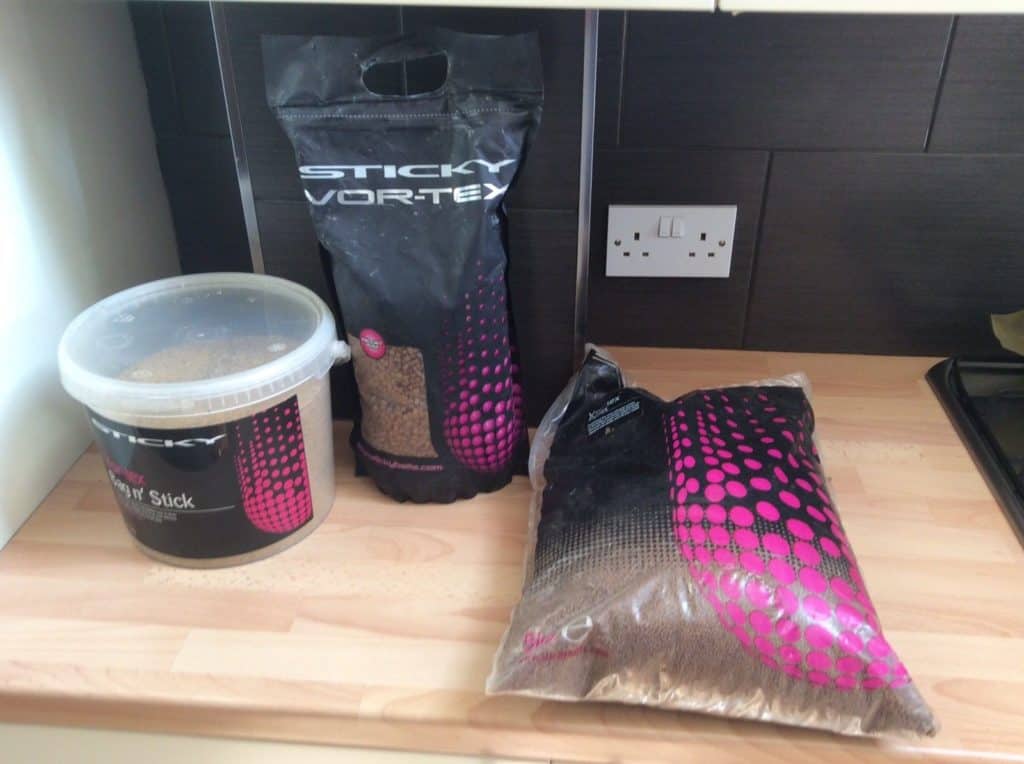
What Do Carp Eat Naturally
Although a fish is omnivorous, it mainly eats aquatic plants and seeds. Adult fish also eat various other organisms such as insects, crustaceans, fish eggs, and mud. When the mud is suspended, the fish will eat the particles.
What is a Carps Diet
Carp can eat various types of animals and plants. It also likes to eat plankton, insects, and larvae. Since it’s incredibly opportunistic, the fish will also eat anything that can fit into its mouth.
Although it mainly eats aquatic plants and seeds, the fish also consumes various other organisms such as aquatic worms, mollusks, and crustaceans. Due to its diverse diet, a variety of baits can be used to attract the fish. Some of these include homemade doughbaits, softbaits, boilies, and dips.
What Triggers a Carp to Feed
As the fish begins to feed, stimulation and chemo-attraction can help facilitate its initial location. It can also sense the food that it’s eating by using its barbules. It can also use its eyes to locate the food source.
The food that the fish consumes is taken into its mouth. Any debris that’s not collected by the fish, such as sticks, stones, and other objects, is thrown out. Fine silt or sand particles are then expelled through the gill rakers.
The items that the fish consumes are then passed back to the phragules, where they are crushed before they can be swallowed. Since it doesn’t have a stomach, the food is digested along the length of the intestine.
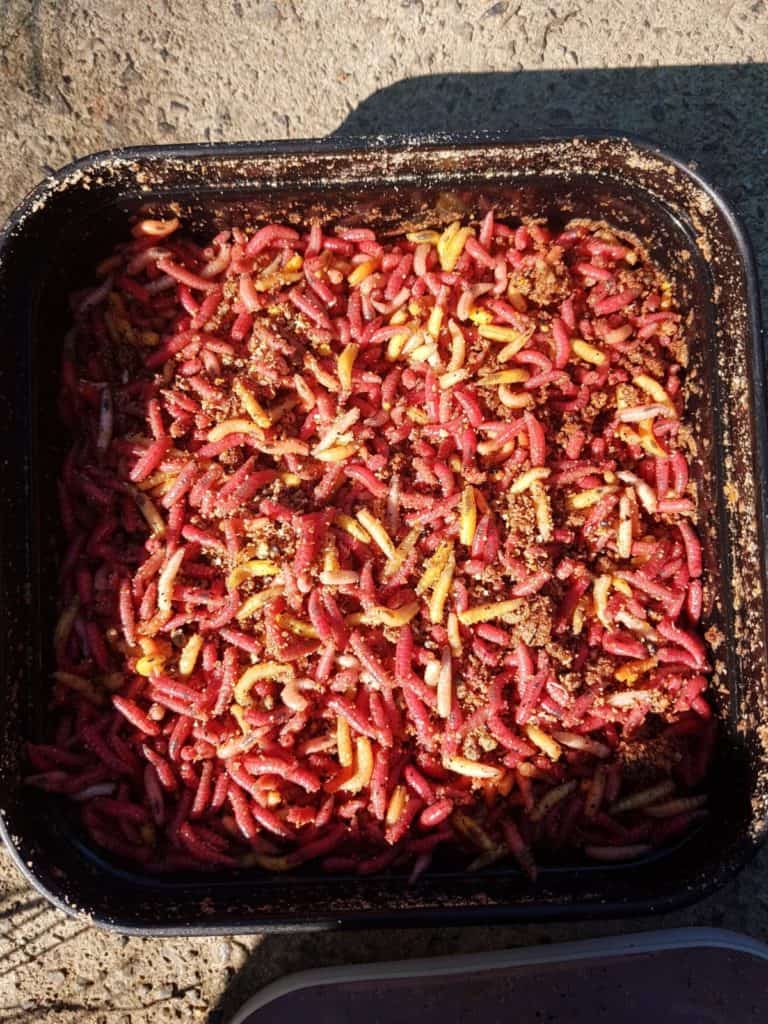
What Do Carp Eat
One of the most important factors that a person can consider when it comes to keeping a healthy and long-lived carp is its diet. Understanding the various food that the fish eats and how it digests it will allow you to make informed decisions.
In a body of water, where the fish is an omnivore, it will eat small amounts of various food items. Some of these include algae, plants, insects, water fleas, freshwater shrimps, and mosquito larvae. It will also eat various other mollusks and snails that are capable of crushing their prey using its powerful pharyngeal teeth.
Even though it can eat small amounts of food items, such as fish eggs, small dead fish, and tadpoles, it has a good sense of smell. Its nostrils are located above its mouth, and its small flap of skin allows water to flow through its back opening.
In a natural habitat, the fish will eat floating plants, mosquito larvae, and flies near the surface of the water. It will also find small fish, daphnia, and tadpoles in the water column. It will then dig through the mud for other aquatic organisms, such as bloodworm, blackworm, and snail. It will additionally eat various types of freshwater shrimp and snails.
As an avid fisherman, it’s important that you keep in mind that the fish will eat at all levels of the lake. They have evolved to be capable of digesting a wide variety of food, and if it’s in their mouth, they’ll taste it and determine if it’s edible.
How Does a Carp Fish Feed
The process of digestion begins in the mouth, where the fish grinds their food into small particles. They also have hollows at the back of their gill arches, which are designed to catch the food particles in the water. Mucus is then produced by the lining of the oral cavity, and the food moves down through the esophagus.
The muscles in the esophagus are designed to squeeze the excess water out of the food. The food goes through the intestine, which is a long tube. Through the help of digestive enzymes, the nutrients are broken down into amino acids, sugars, and fats.
The nutrients and minerals are then absorbed through the bloodstream. The remaining food particles are then produced by the mucus-producing cells in the last part of the intestine. Undigested food is often a similar colour to the food that it was consumed. Since the temperature of the water where the fish is caught is cold, its metabolism and digestion speed up when it gets warmer.
There are many practical lessons that can be learned from studying the digestive system and how a carp would eat in its natural habitat. One of the most important factors that you should consider is how many small meals the fish will eat. Large meals can lead to a lot of food going out the back end.
In addition to providing nutrients and minerals, undigested food also helps the bacteria that live on the bottom of the lake break down debris. They then consume oxygen and release ammonia, which increases the bioload of the lake.
Like humans, carp relies on its senses when it comes to food. It has a highly developed sense of smell and taste that it uses to determine if the food it consumes is edible. It can also sense dissolved substances in the water using its two eyes. However, if an item is in front of or below its mouth, its barbules will respond to touch and taste.
In an instant, the brain of a fish can determine if the food it consumes is edible. It can also smell the scent of amino acids and other smells that are produced by aquatic plants and bloodworms. Some of the food that the fish can eat contain amino acids and sugar, which are known to have nutritional value.
When the scent of the food is not present, the fish will not eat the bait. Also, negative associations with the smell can affect the fish’s willingness to eat.
Aside from its sense of smell, carp also has a taste that it uses to determine if the food it consumes is good or bad. Its taste buds are located on its barbules, pelvic fins, and underneath its head.
The ability to smell and taste food helps the Asian carp identify its food sources. For instance, if a bloodworm is present, the fish will suck the silt and other debris into its mouth. Its taste organ on the top portion of its mouth then traps the food against the bottom portion of its mouth.
Little Know Facts About Carp and How They Feed
About 97% of the food that carp consumes is ejected. The remaining debris is crushed by the fish’s pharyngeal teeth, which are located at the back of its mouth. These teeth are aligned in three rows. One tooth is located in the outer two rows, and three are in the inner three.
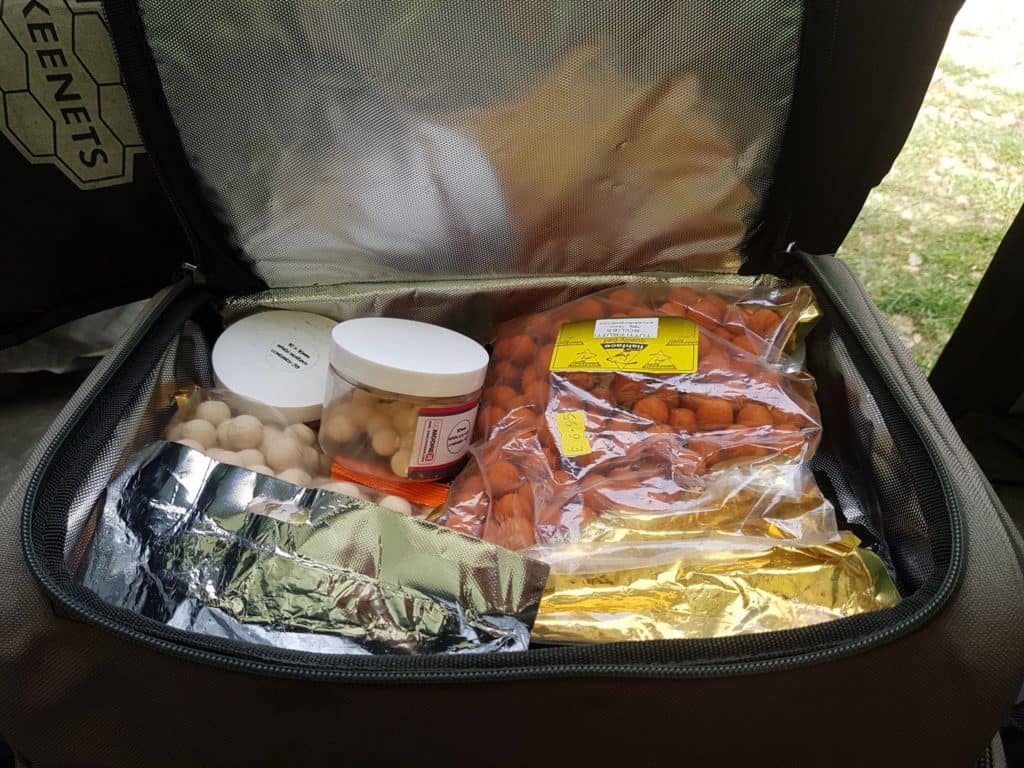
What Carp Bait is Best
Some people believe that carp prefer bread crust, meat, and cheese, while others think that it likes boilies, fishmeal, and other similar items. Some believe that the fish also prefer ingredients that mimic certain smells, such as seaweed extract or green-lipped mussel extract. Boilies with natural attractors, such as kelp or fishmeal, are ideal for attracting the fish.
Some people, however, use peanuts as an alternative to the natural food sources that the carp likes. Although these contain amino acids, sugar, and lipids, they do not mimic the fish’s natural diet.
Some professional fishermen claim that they can successfully lure carp into their hooks using flavored imitation bait. Artificial corn works best when the boilies fail to attract the fish.
Aside from being able to taste and smell their prey, carp also have a sense of vision. It can see in low light levels and ultraviolet rays. Its two eyes are designed to focus and are equipped with a blind spot below and in front of its mouth. At close range, the fish rely on its barbules for their food detection.
The modern angler can find a wide range of carp bait at his local tackle shop. Some of these include boilies, artificial corn, and other similar hookbaits.
Boilies
Aside from being available in different sizes, boilies are also commonly made from frozen and homemade materials. These can be purchased in various tackle shops and online. Although they can keep for months, open them and they will last a long time if kept cool and dry.
If they are allowed to dry out, they will become very hard to hold, and if they get damp, they may turn moldy. After opening a packet, try to use them during a fishing session or freeze them for later use. They will also lose some of their flavour once they are opened, and you should try a new batch every time.
Nowadays, it is easier to purchase frozen boilies as most tackle shops have dedicated bait freezers. If you have unused boilies, try taking just what you would use during the fishing session to ensure that the flavour and nutrients stay intact.
Making boilies is not as easy as it sounds, and it requires a lot of expertise and equipment to make them consistently. However, the personal rewards of catching a fish on your own line are enough to keep most people from using other types of boilies.
These are also very fresh and will keep well-fed for a long time. They can be made to your exact requirements to catch the carp that you are targeting.
Aside from boilies, other types of carp bait can also be used to attract the fish. These include man-made hookbaits, pellets, and particles.
Pellets
There is a wide range of types of pellets available in shops, and some are specifically made for catching carp. These include high-oil and low-oil pellet varieties that are ideal for warm-weather fishing.
If you are planning on using a large pellet, try attaching it to a hair. For smaller sizes, try making a paste out of them by adding hot water to a mixture for half an hour. If the fish won’t stay on the hook, add an egg to the mix.
Pastes
Due to the increasing number of products that are made to resemble boilies, many companies have started offering various types of pastes that are designed to match the colors and textures of the bait that you are using. One of the main advantages of using a paste is that it can make the bait look like it has been sitting on the lake for a long time.
Particles
A wide range of particles can be used to attract the fish. One of the most popular types is hemp, as its oil-rich content makes it an ideal choice for cooking. Its small size helps the fish find the bait.
Unfortunately, hemp is not suitable for use as an attractor due to its small size. However, it can be used as a combination with other particles such as wild bird seed and pigeon conditioner. Other common types of particles that can be used to attract the fish include various types of vegetables and nuts.
These are all available from a local dealer, and you’ll be surprised by how much you can get for your money. Before using them, make sure that the nuts and seeds are thoroughly cooked. Ask your local fishery owner or bait dealer for advice.
Unfortunately, it is not always possible to get the microparticles to look natural when attached to a hair. As a result, it is often difficult for the fish to get a large boilie when they are fed on mini particles. Instead of using a paste, try using fake corn or other grains over the top of the particles.
Recently, Fox introduced a plastic stocking material that can be used to make small bags of particles. This has caught the attention of many fish, as they consider these to be a large lump of particles.
Natural Foods
Other types of natural carp bait include worms, flies, maggots, and insects that can be found in the water. Also, try using cockles, which are often attached to a hair rig. Other popular natural food items that can be used for attracting fish include freshwater mussels and shrimps.
Something to Remember About Carp Bait
The key to successful fishing is to experiment. Don’t try and copy the methods used by others. Instead, try developing your own unique approach that will work well for the fish. It’s also important to note that certain types of bait are not allowed in certain areas. For instance, tiger nuts and peanuts are not allowed in some waters due to the safety of the fish and the fishery.
I have made a lot of mistakes during my fishing sessions and don’t want you to make the same mistakes. I’ve learned the hard way over 20 years of fishing most weekends, testing, tweaking, and testing again and now want to help you excel with your carp fishing.
If you need any help, you can reach me at Fishing Again’s Facebook page

